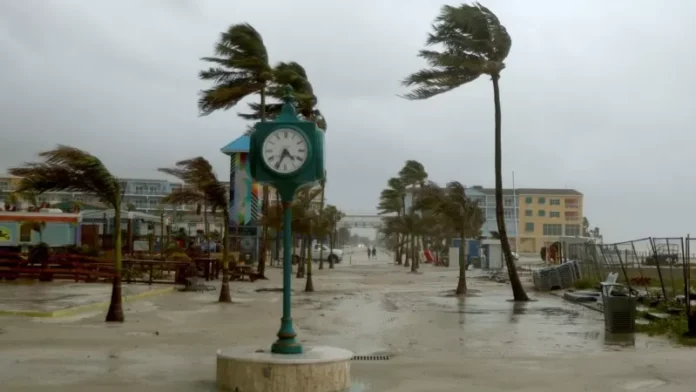TAMPA, FLORIDA — The center of Hurricane Debby is expected to reach the Big Bend coast of Florida early Monday, bringing with it potential record-setting rains, catastrophic flooding, and life-threatening storm surge. As the storm moves slowly across the northern part of the state before stalling over the coastal regions of Georgia and South Carolina, residents and officials are preparing for the worst.
Debby, the fourth named storm of the 2024 Atlantic hurricane season, has already caused significant damage in its wake. With maximum sustained winds of 80 mph (130 kph), the storm was located about 40 miles (70 kilometers) west of Cedar Key, Florida, and was moving north at 12 mph (19 kph), according to the National Hurricane Center in Miami.
Forecasters have warned of heavy amounts of rain from Debby, which could lead to catastrophic flooding in Florida, South Carolina, and Georgia. The storm is expected to make landfall around midday Monday in the Big Bend area of Florida, north of Tampa. A tornado watch has also been issued for parts of Florida and Georgia until 6 a.m. Monday.
Sheryl Horne, whose family owns the Shell Island Fish Camp along the Wakulla River in St. Marks, Florida, is one of many residents preparing for the storm. “Right now, we are trying to secure everything from floating away,” she said. The sparsely populated Big Bend region in the Florida Panhandle was hit last year by Hurricane Idalia, which made landfall as a Category 3 hurricane.
Horne, like many others in the area, is no stranger to storms and the aftermath they bring. However, Debby is expected to be much wetter and could potentially cause record-breaking rainfall in Georgia and South Carolina. Michael Brennan, director of the hurricane center, warned of “amazing in a bad way” rainfall totals of up to 76 centimeters, which could lead to flooding impacts lasting through Friday.
Officials have also issued warnings of life-threatening storm surge along Florida’s Gulf Coast, with 1.8 to 3 meters of inundation expected Monday between the Ochlockonee and Suwannee rivers. The potential for flooding is especially severe in low-lying areas near the coast, including Savannah, Georgia; Hilton Head, South Carolina; and Charleston, South Carolina. North Carolina officials are also monitoring the storm’s progress.
Savannah Mayor Van. R. Johnson emphasized the severity of the situation during a press conference, stating, “This is going to be a significant storm. The word ‘historic’ cannot be underscored here.” The hurricane center reported that at 11 p.m., Debby was located about 161 kilometers west of Tampa, Florida, with maximum sustained winds of 120 kph and moving north at 19 kph.
Debby’s outer bands have already caused flooding and power outages along the west coast of Florida. Sarasota County officials reported that most roadways on Siesta Key, a barrier island off the coast of Sarasota, were under water. The hurricane center had predicted that the system would strengthen as it curved off the southwest Florida coast, where the water has been extremely warm.
During a briefing on Sunday afternoon, Florida Gov. Ron DeSantis warned that the storm could lead to “really, really significant flooding that will happen in North Central Florida.” He also noted that Debby is expected to follow a similar track to Hurricane Idalia but will be much wetter, causing more inundation.
In preparation for the storm, a hurricane warning has been issued for parts of the Big Bend and Florida Panhandle areas, while tropical storm warnings have been posted for Florida’s West Coast, the southern Florida Keys, and Dry Tortugas. A tropical storm watch has also been extended farther west into the Panhandle.
Tropical storms and hurricanes can trigger river flooding and overwhelm drainage systems and canals. Forecasters have warned of 15 centimeters to 30 centimeters of rain and up to 46 centimeters in isolated areas of Florida.
In addition to the potential for flooding, the storm surge is also expected to hit the Gulf Coast, including Tampa Bay. Flat Florida is prone to flooding even on sunny days, and the storm is predicted to bring a surge of 0.6 to 1.2 meters along most of the Gulf Coast, with a storm tide of up to 2.1 meters north of there in

